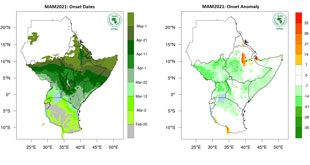
Kampala, Uganda | THE INDEPENDENT | Uganda’s milk production grew by 37 percent to 3.85 billion litres in the year 2022/2023, against the odds like drought in some production areas.
The Ministry of Agriculture, Animal Industry and Fisheries reports that on the other hand, the export value increases by more than half to 264.5 million dollars (or about 1 trillion shillings) up from 102.6 (388 billion shillings) registered the previous year.
While processing and exports have been on the increase, the livestock farmers continue to face a challenge of fluctuating prices, especially during seasons of high output.
In the countryside, a litre drops from as high as 1,800 shillings to as low as 1,000 shillings, while other farmers find no buyer even at the lowest prices. In many areas, this is being overcome by the evolution of the cooperatives which focus on transportation and marketing.
The ministry says the returns would have been better had it not been for the constant export market disruptions. “The intermittent closures and limitation of dairy imports by Kenya which has been our biggest export market for liquid dairy products has had a notable impact on the incomes of our farmers as well as loss of jobs at some processors,” says Dr. Bright Rwamirama, Minister of State for Animal Industry. This was mainly in the 2022.
Giving his annual update on the sector, Rwamirama gave hope regarding the exports as the country gets new market deals, adding that the Senegal and Algeria export agreements “will soon bear fruit”.
The minister also emphasised the need for increased local consumption for both nutritional health and returns for the local industry, in the midst of the export market challenges. Uganda produces more milk than she consumes, yet the consumption rates are far below the World Health Organization recommended 200 litres of milk per person per year.
“We therefore need to explore ways of increasing domestic consumption especially amongst the school going children as has been practiced in other countries for a long time.”
Under the Clean Milk Production Campaign implemented by the Diary Development Authority, the government has been assisting cooperatives and farmers with dairy equipment like milk cans, scoops, milking buckets, milking machines among others, to improve the standards. Rwamirama says that focus is now on value addition. “We are now encouraging milk powder processing for longshelf life and distant market access,” he says.
He also says that the locally produced anti-tick vaccine will soon be rolled out countrywide following the trial that commenced in 2022, to save farmers from the losses they incur through counterfeit and low quality chemicals on the market.
“Upon the successful conclusion of the trial, the anti-tick vaccine will be available and ready for scaling up for use by livestock farmers. Currently, livestock farmers are spraying their animals every week, but with the vaccine, they will apply twice every 6 months.”
According to him the injectable vaccine has given promising results against brown, blue, and red ticks. The ministry, through the National Animal Genetic Resources Centre and Data Bank also launched plans aimed at improving the quality and availability of high-yielding dairy breeds.
“This is being piloted through community breeding as well as bringing Artificial Insemination services closer to the farmers, to improve productivity per cow, animal nutrition and health. We are investing more in disease prevention than treatment,” says Rwamirama.
***
URN
 The Independent Uganda: You get the Truth we Pay the Price
The Independent Uganda: You get the Truth we Pay the Price


